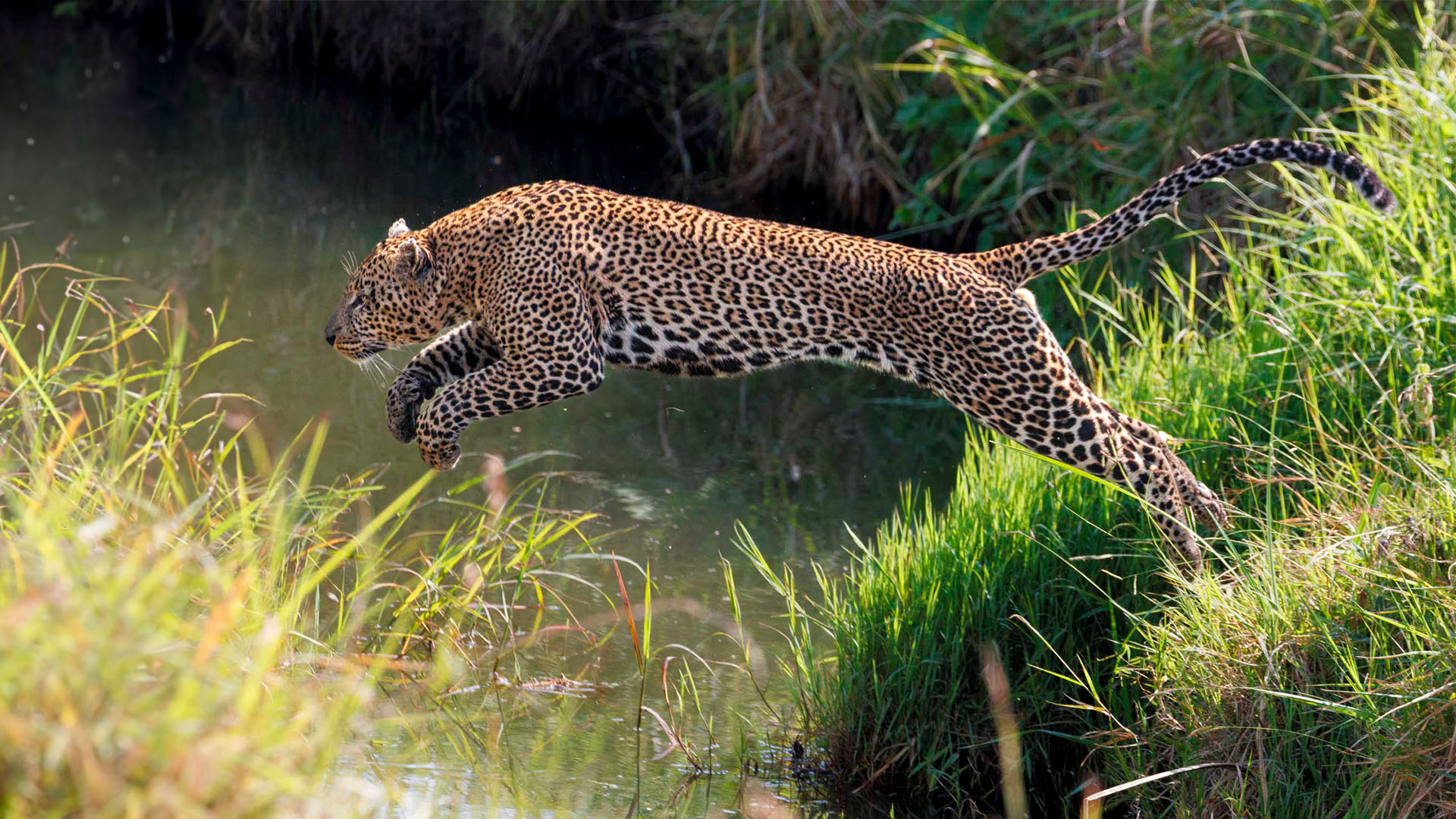
As the sun rises, casting a golden glow over the escarpment, the majestic silhouettes of elephants and giraffes emerge against the sky. Amidst this stunning backdrop, we’ve been fortunate to repeatedly spot the Angama lioness with her cubs. They are occasionally seen with the Owino male but don’t seem to be mating yet. She embodies this sentiment beautifully as she continues to nurture and protect her cubs in this wild and unforgiving ecosystem.
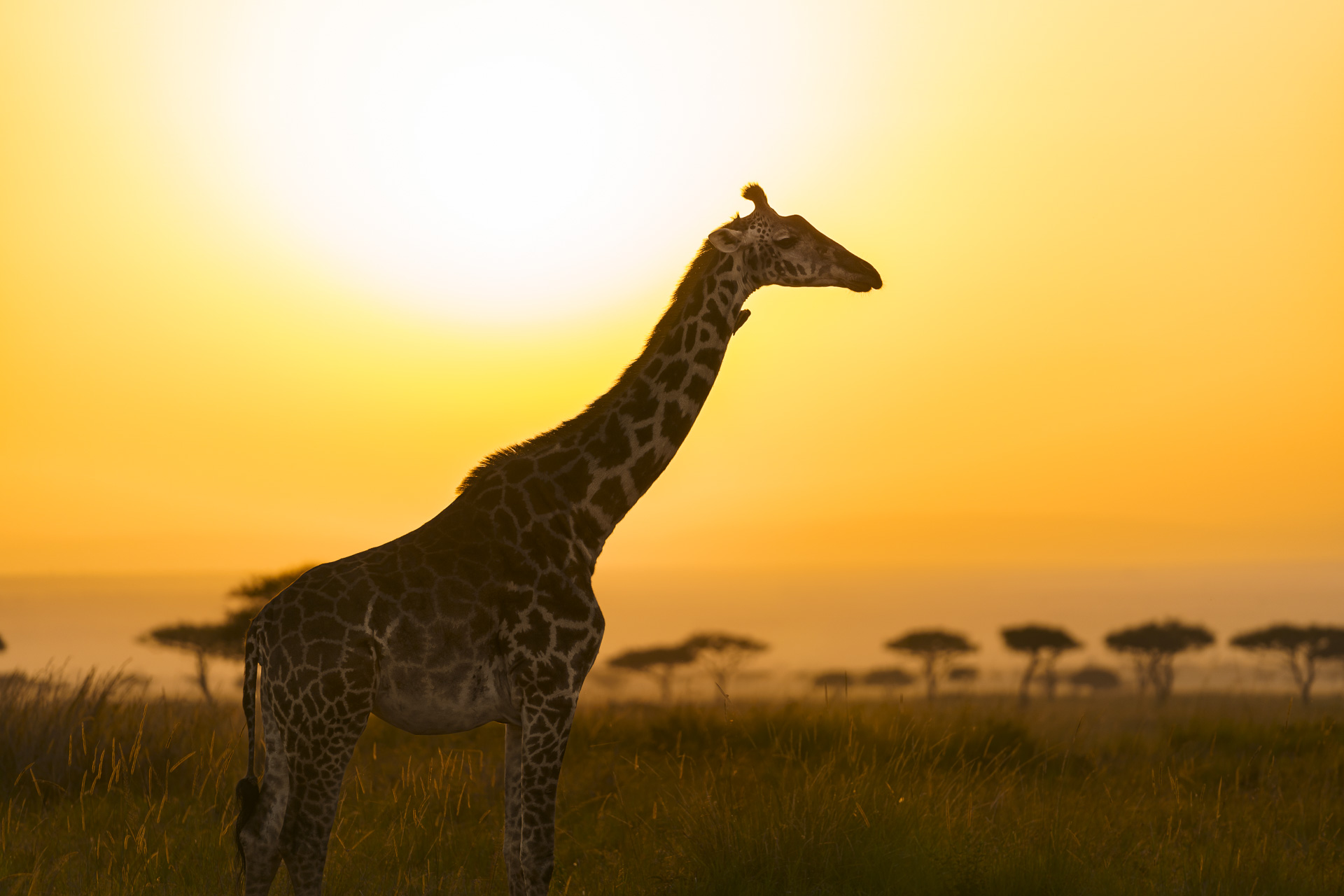

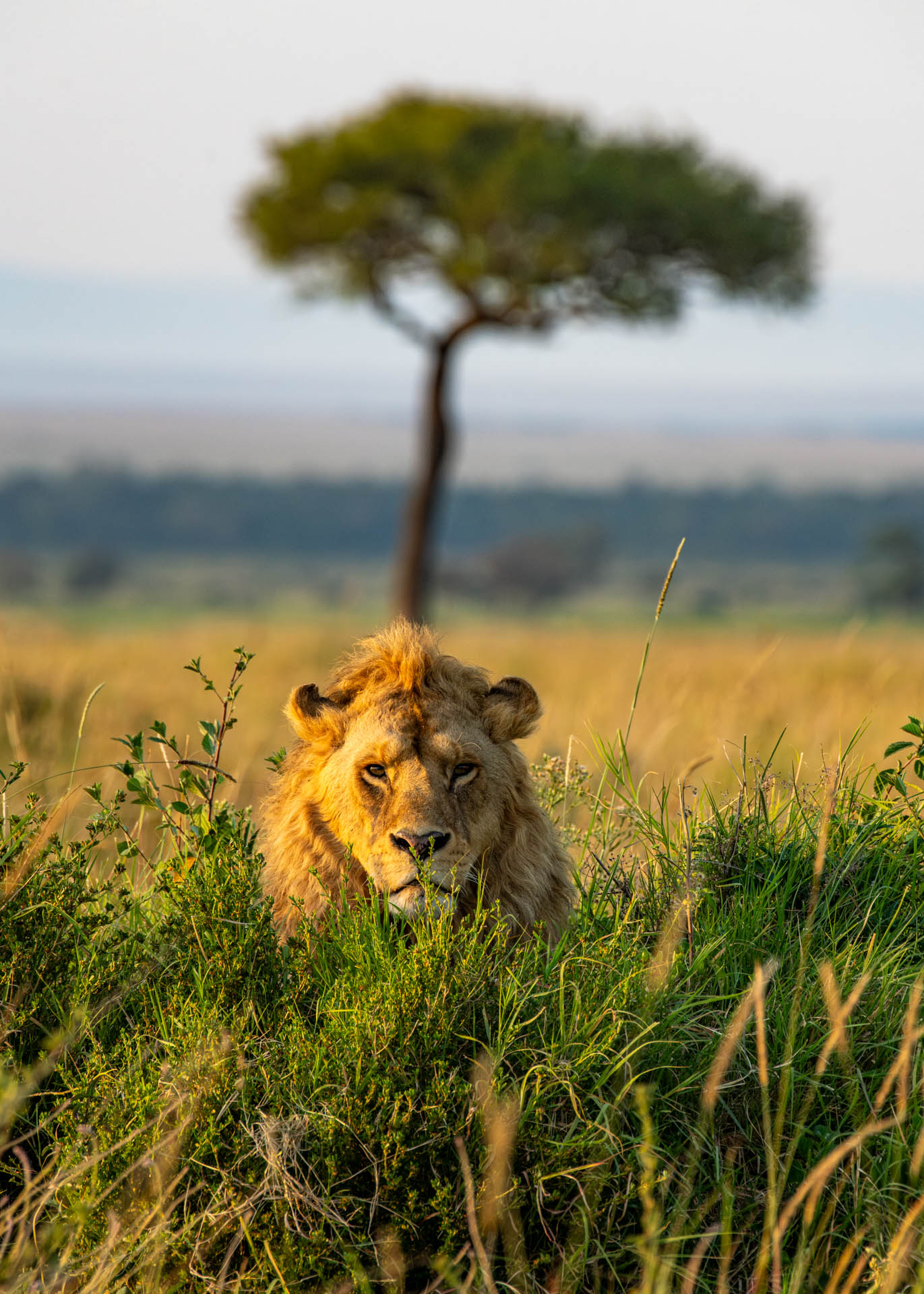
This week has been exceptional for sightings of the most elusive of the big cat family. Angama Guide Jeremy and his guests were thrilled to spot the Salt Lick female with her cub. They enjoyed a serene evening watching as the pair climbed up and down a tree where they had stashed a Thompson’s gazelle kill. The mother is doing an excellent job raising her cub, and we hope it will thrive into adulthood.

We also encountered Nashipae, another leopardess, near the Mara River. Despite the heartbreaking loss of her cub to Shujaa last year, she was seen scanning for prey with unwavering determination before disappearing into the Maji Machafu stream.
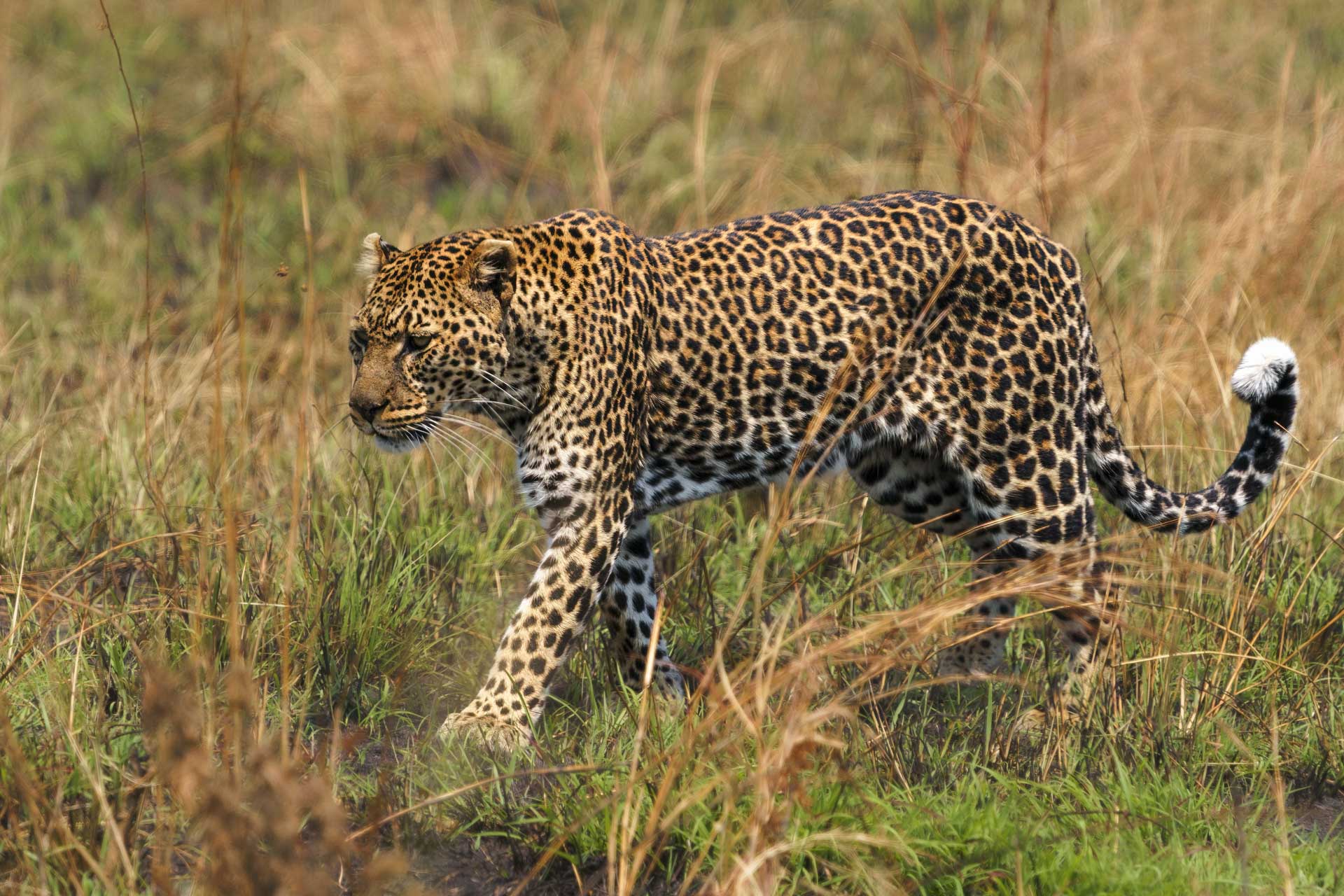
Another thrilling sighting was the Salt Lick male, also known as Lorngaboli. Guide Robert and his guests observed him basking on a termite mound. After a while, he moved to a dried-up stream to quench his thirst, then made an impressive leap to the other side. These elusive felines are a true spectacle, appearing only when they choose to be seen, and this week, they have certainly put on a show. They add a mystery presence to the Mara Triangle, captivating all who are lucky enough to witness them.

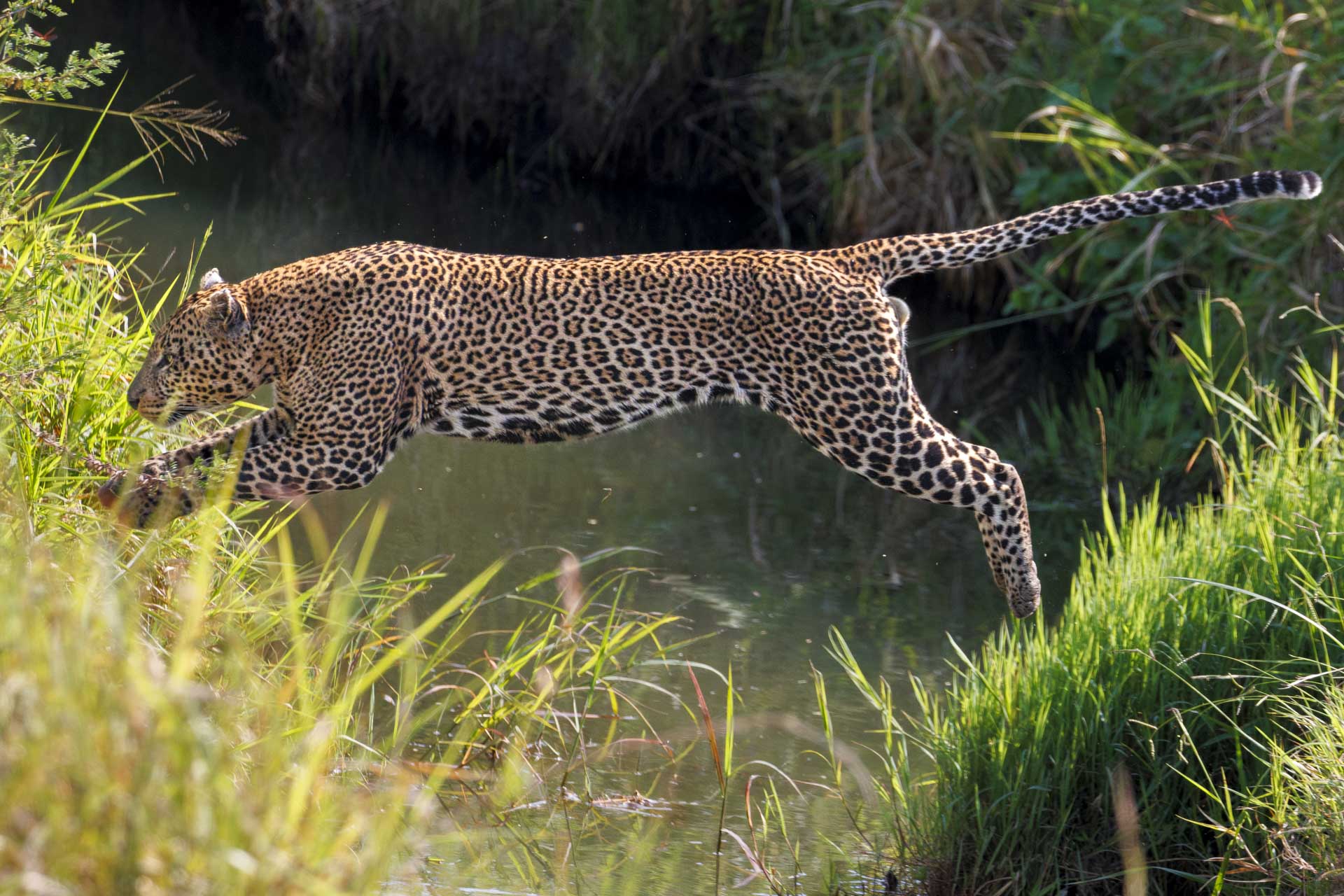
We were fortunate to watch an elephant herd of nearly 150 members crossing the river for almost an hour. One of the bulls, feeling unsettled by some giraffes likely waiting for their turn to cross, charged them to clear the way. We've noticed that many of the bulls are currently in musth, and most of the cows also seem to be ready for mating. This bodes well for the tusk population in the Triangle.

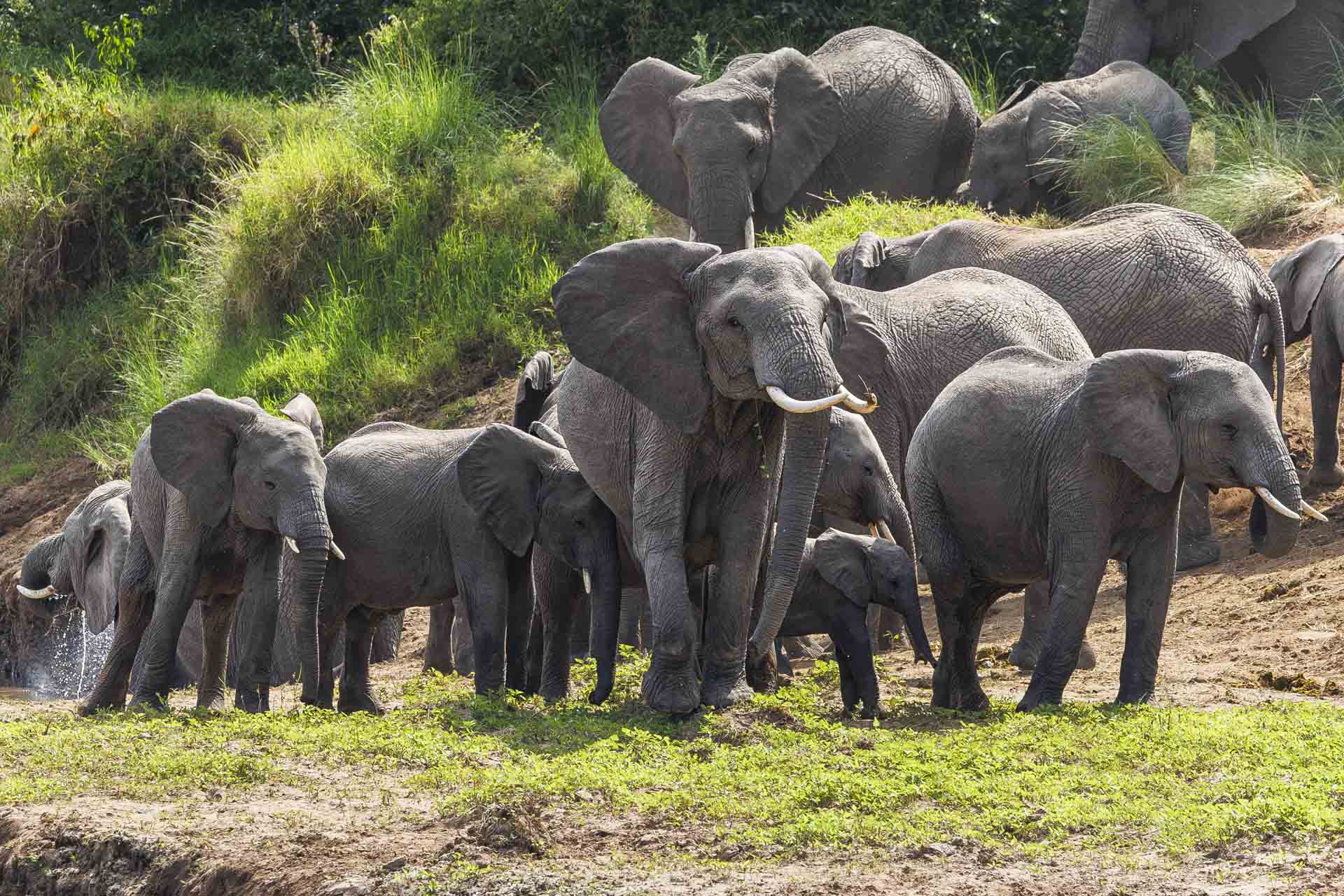
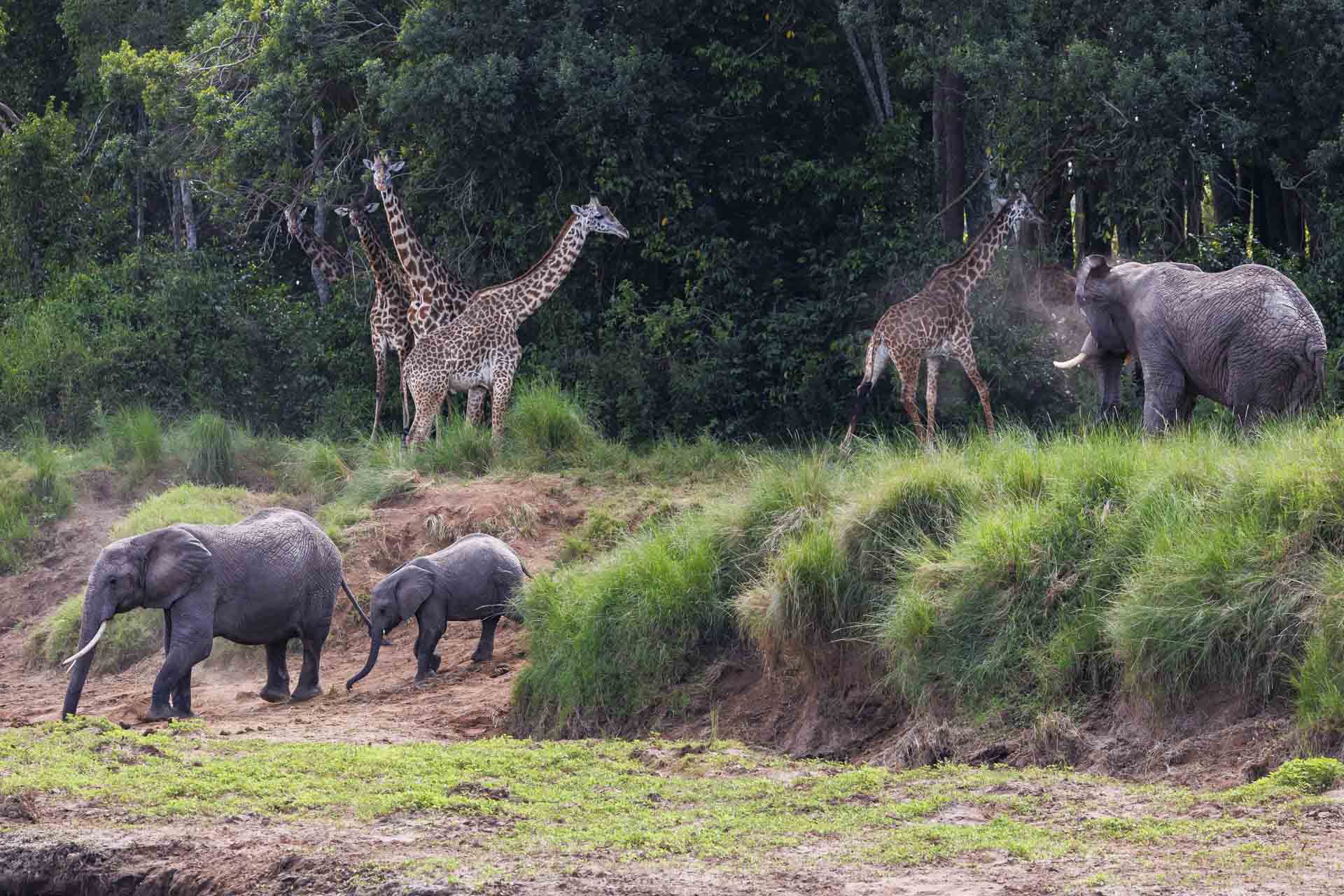
A famous cheetah in the ecosystem, Siligi, had seven cubs in 2021, and two have made it to adulthood. These two boys have crossed from Serengeti into the Mara Triangle and are already hunting and thriving, showing us that they’re well adapted to the larger ecosystem. Their arrival signals significant changes are on the horizon for the Mara ecosystem as down by the Mara River, crocodiles are becoming more active, coinciding with migration herds seen crossing south at the Sand River. Resident wildebeest and zebra herds are also moving closer to the river, instinctively preparing to greet the larger herds migrating from the Serengeti in the coming weeks and months.

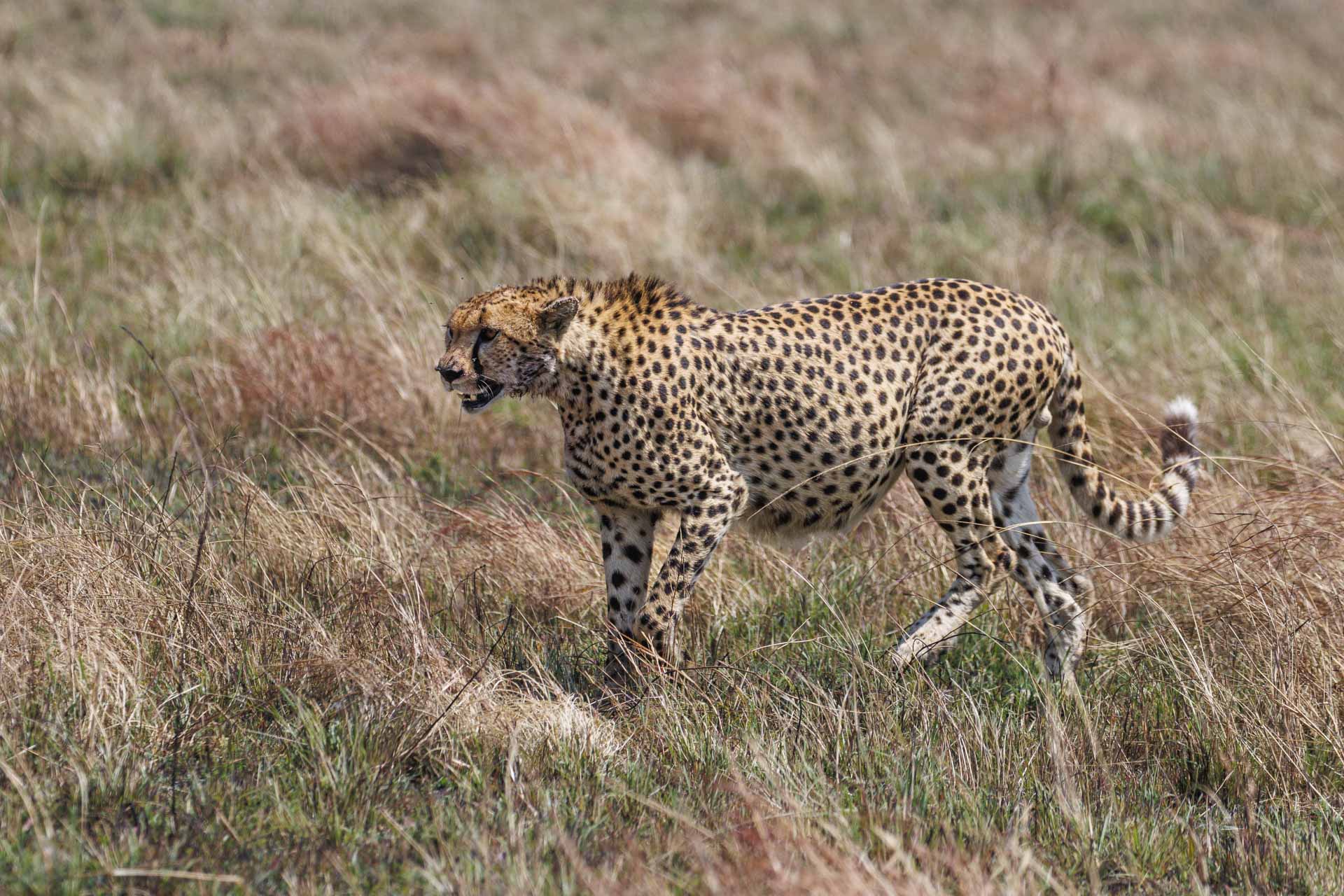
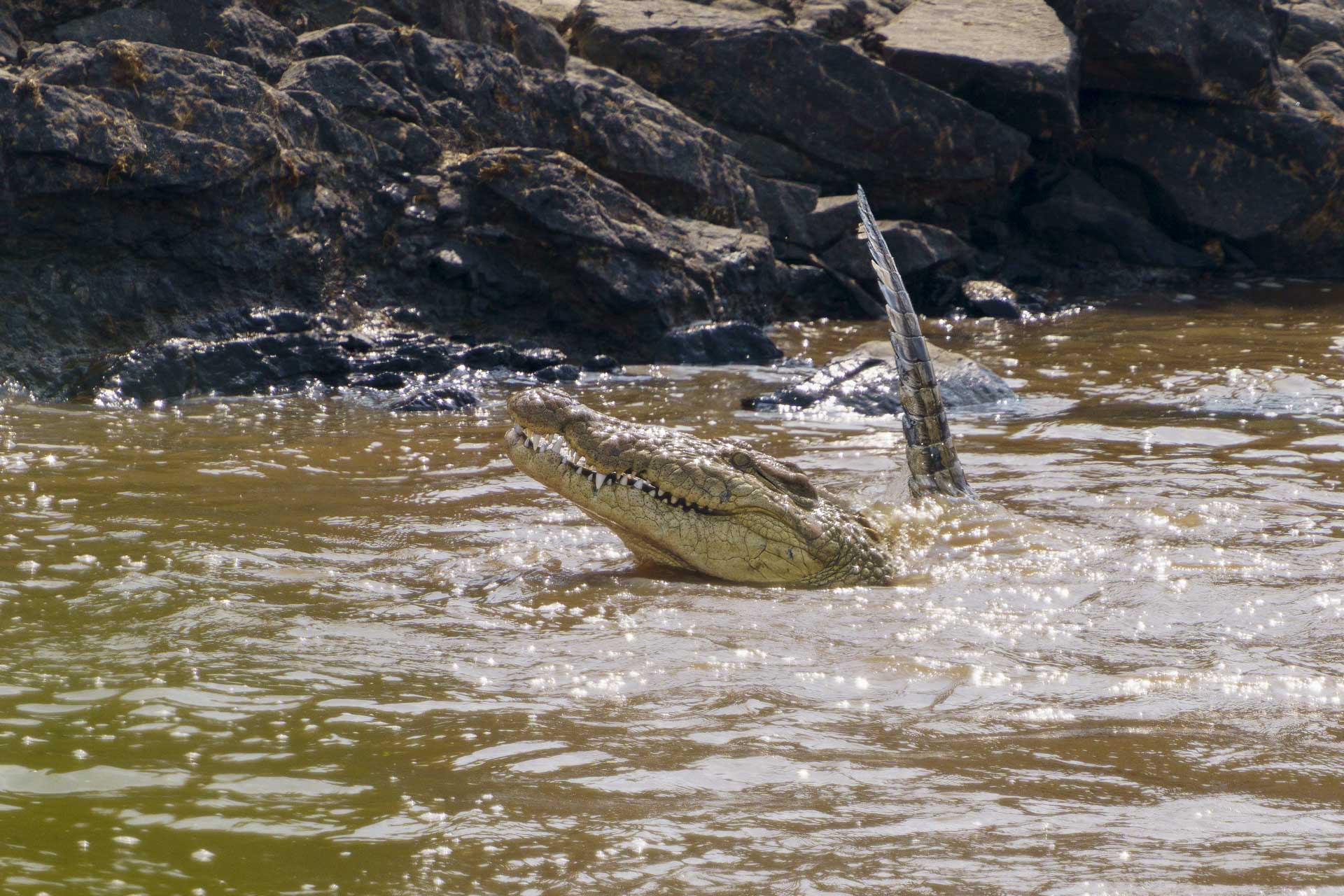
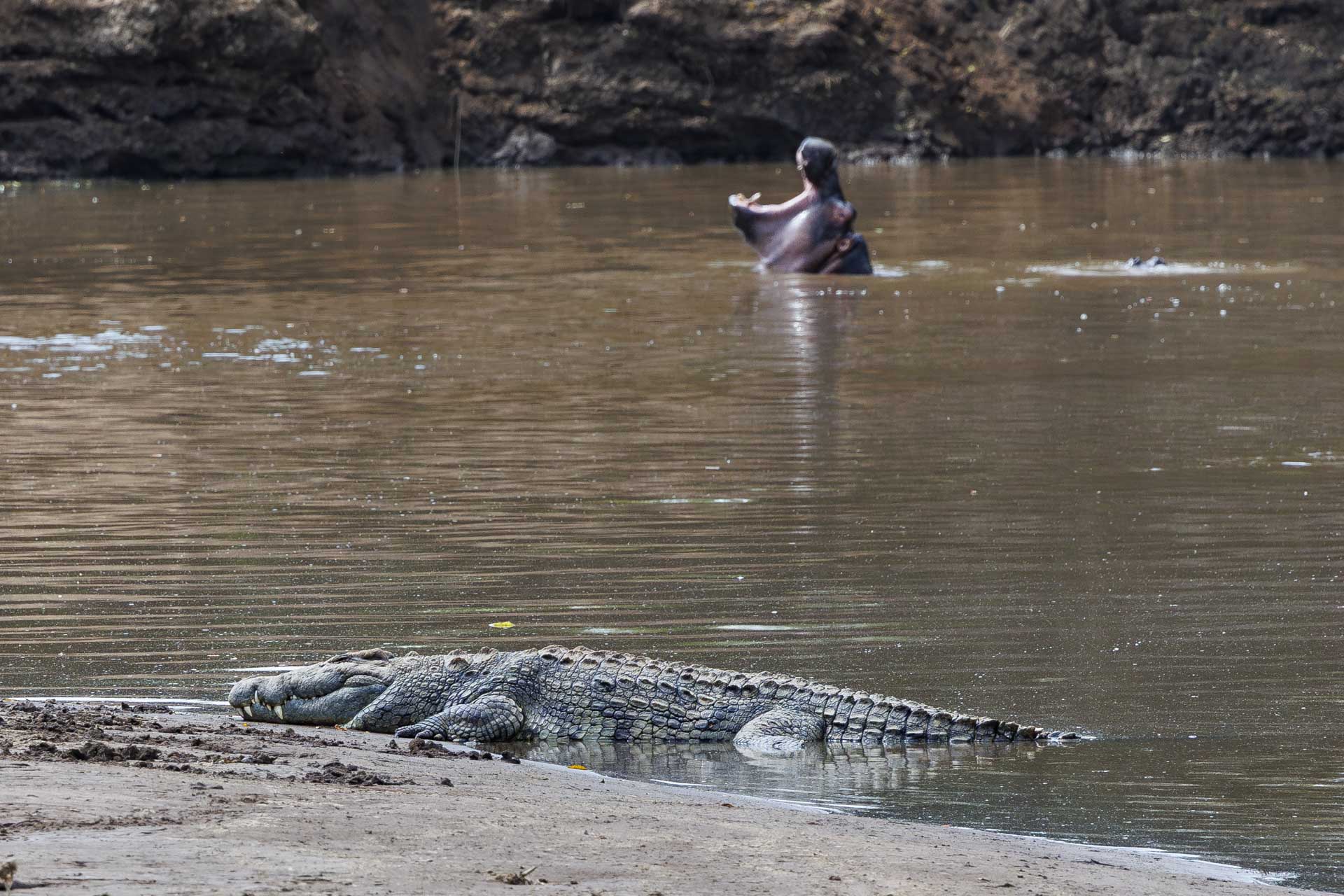
The avian population has also been spectacular to follow. Wilson Naitoi, another of Angama's Guides, observed a white-browed coucal devouring a frog in a somewhat graphic reminder of nature’s food chain. Guide Robert captured the elusive African fish eagle in full flight — a challenging feat given the bird’s incredible speed. –Japheth Supeyo
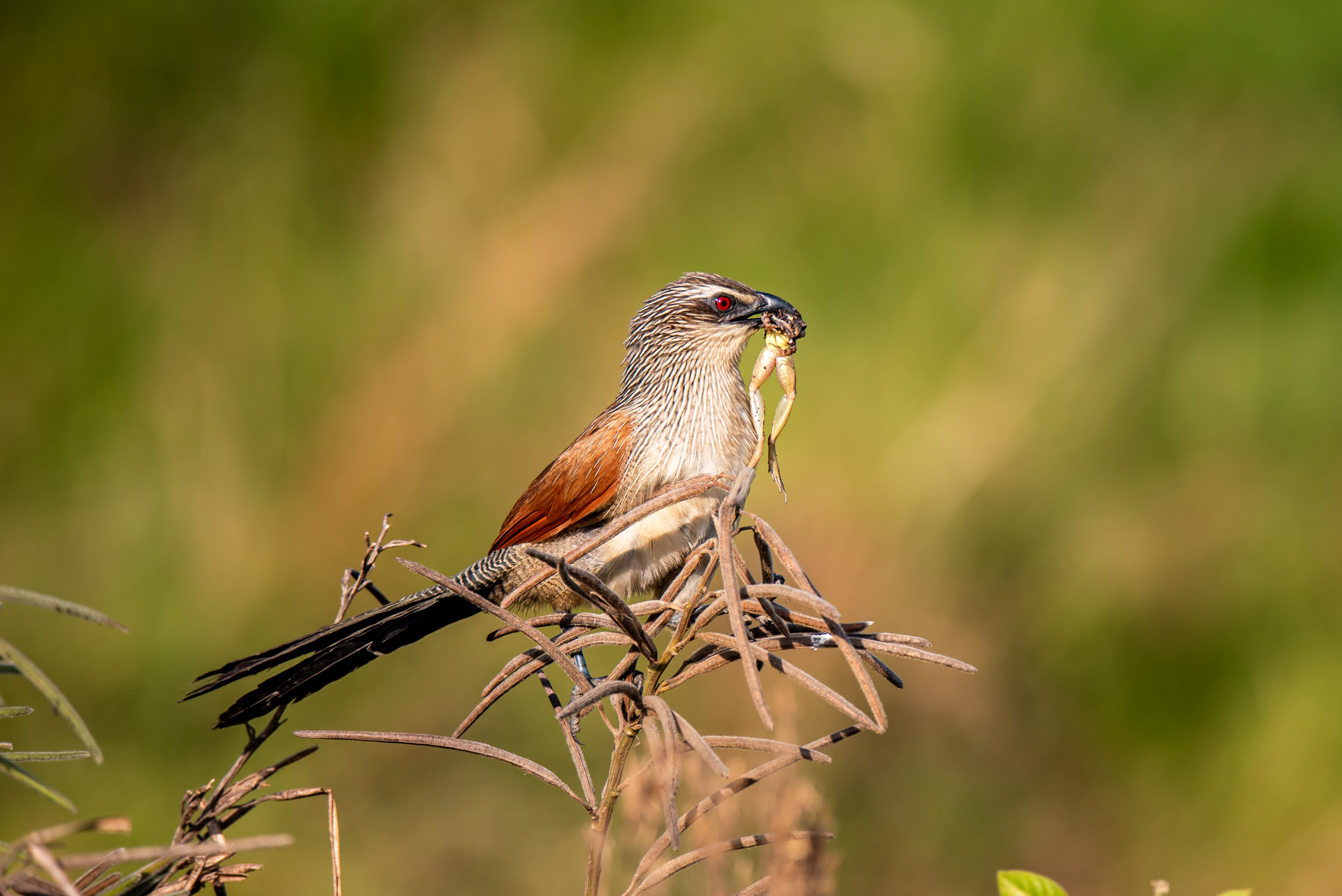
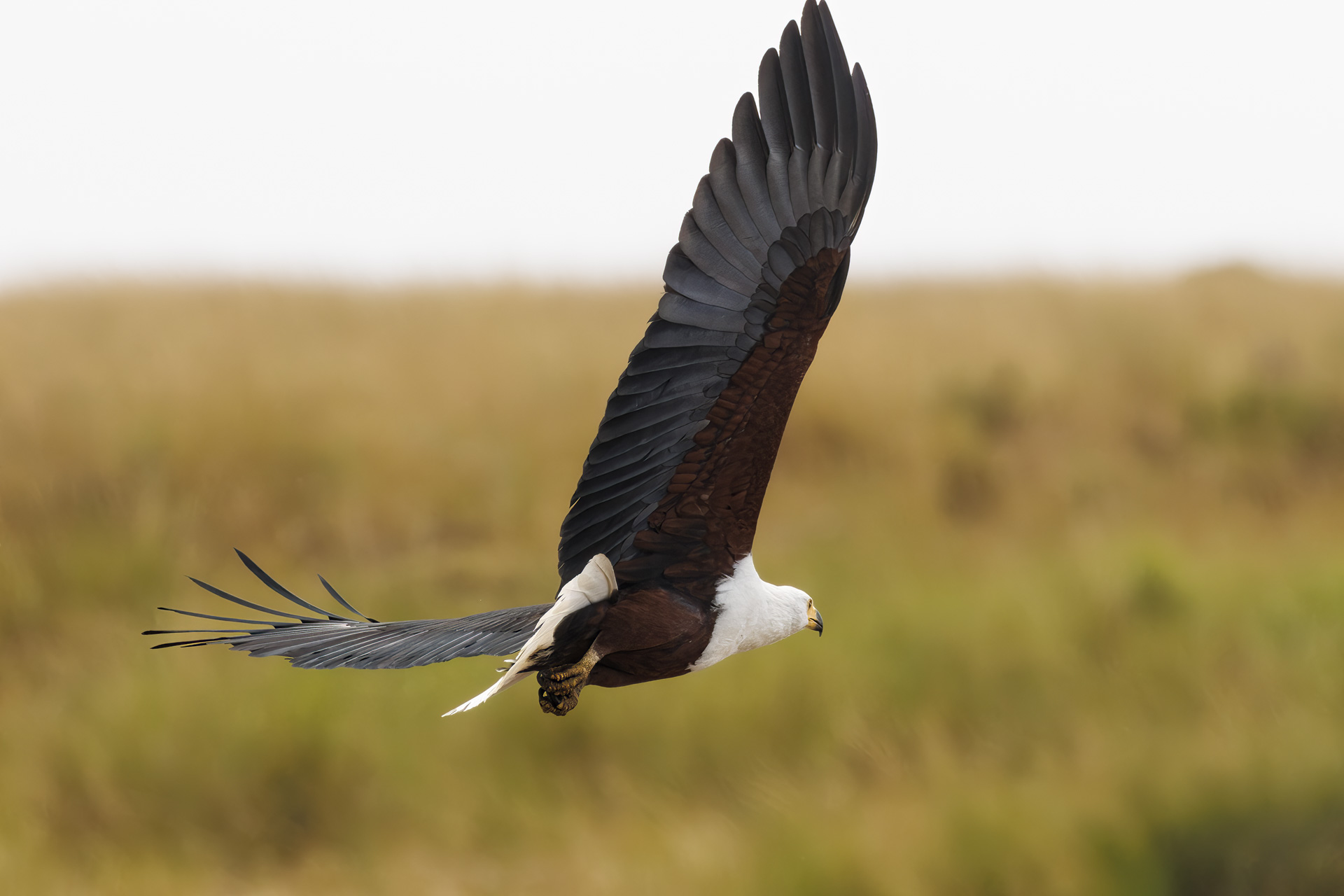
After the cycle of a full moon has passed, it does not reflect much light allowing stars to shine brightest. Far from dense light pollution, Kimana Sanctuary can be an ideal place for stargazing. On a clear and chilly night this last week, I took some long exposure pictures of the night sky. Just with the naked eye, you could make out the celestial river that makes up the Milky Way. Trails of stars were sprinkled all over the sky; some brighter than others. One that caught my eye was an unusually bright red star — Antares, a red supergiant that is about 700 times the size of the sun and 500 lightyears away.
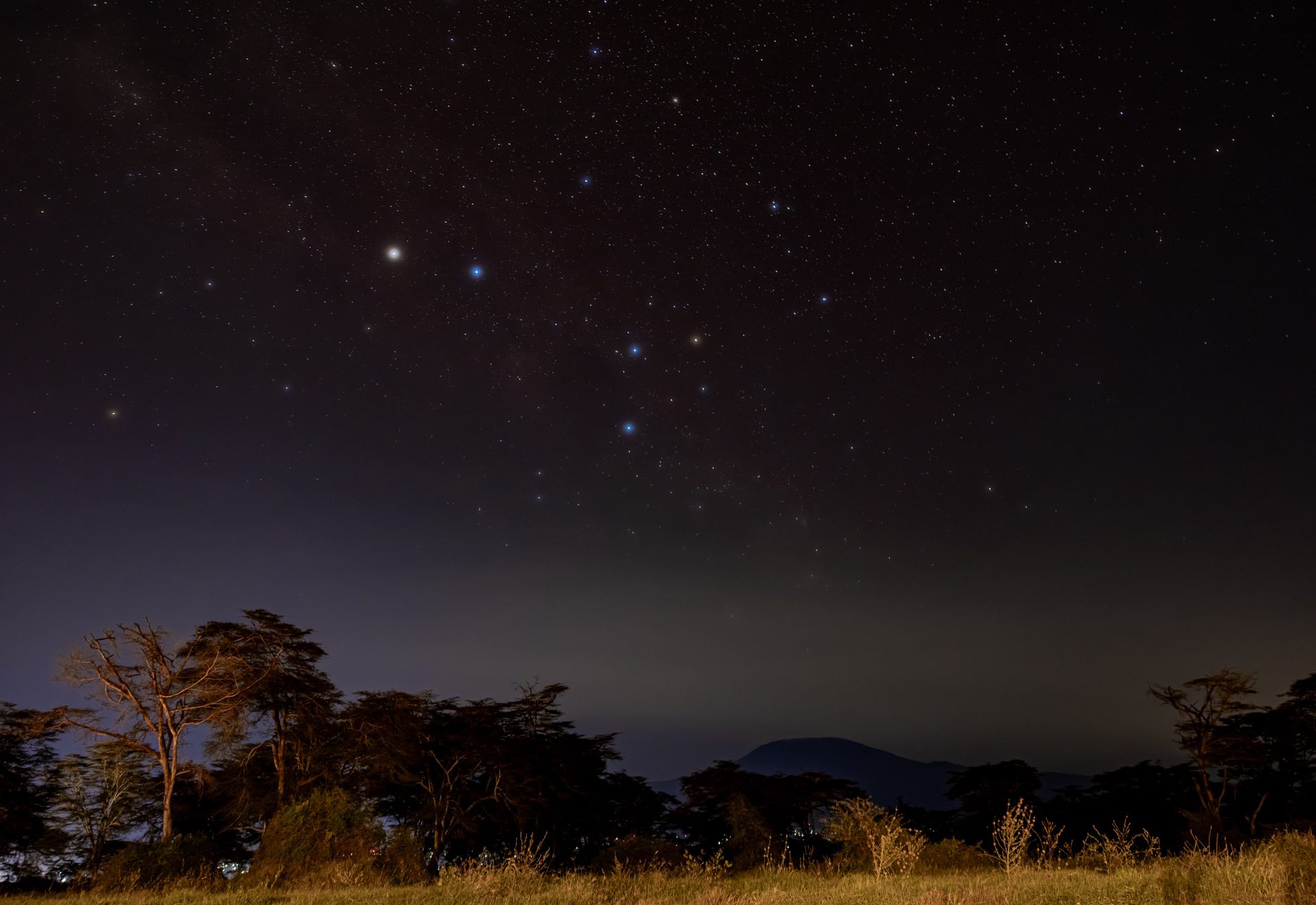
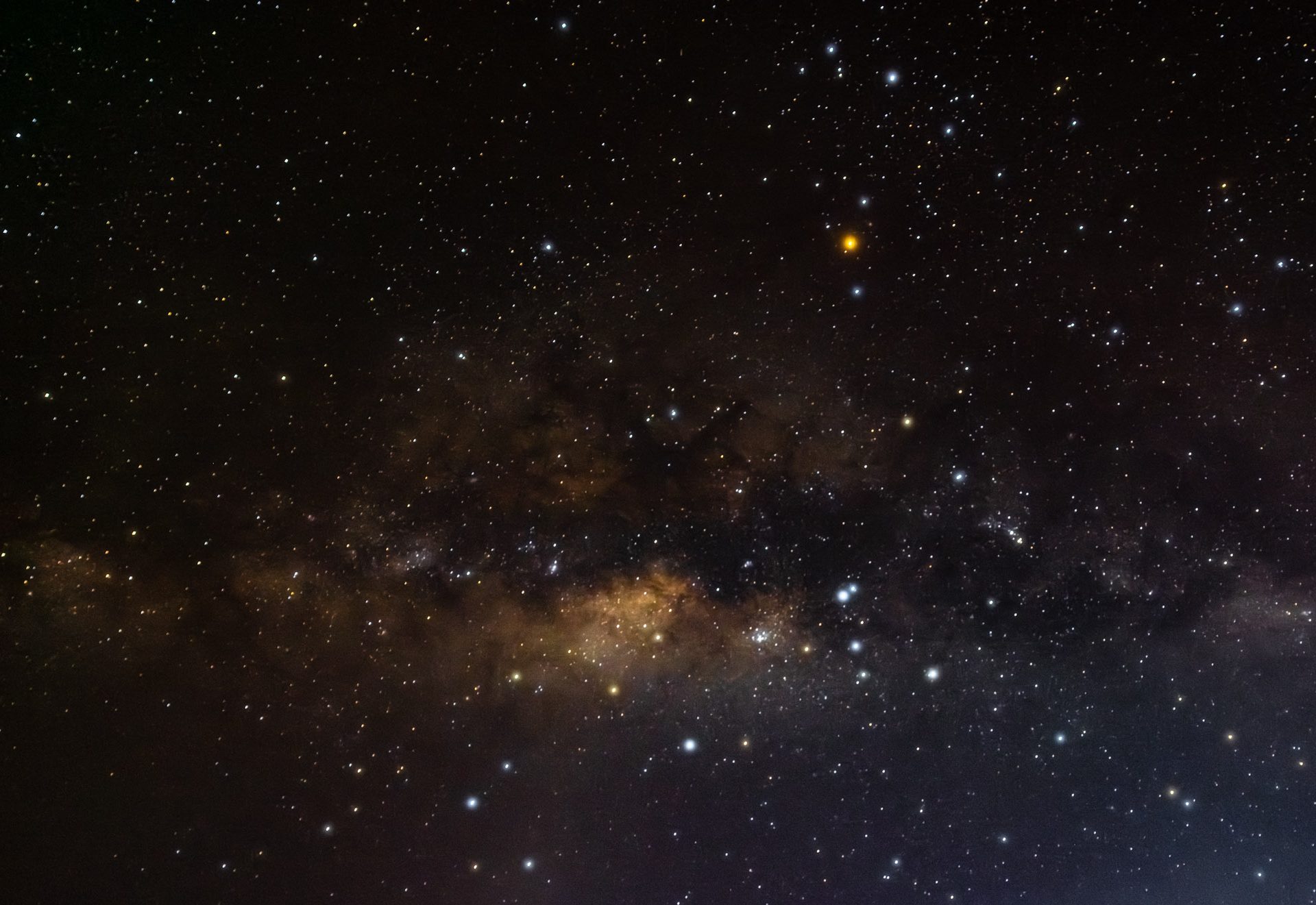
The nights have also been filled with the distant sounds of lions roaring, echoing in the darkness. Head Guide Alice once again spotted the lions in the Sanctuary, this time two of them together. Alice mentioned that both the male and the female exhibited the flehmen response — used by males to detect pheromones from females and for the females to evaluate potential mates. They were following each other as they moved through the grass and onto the road.
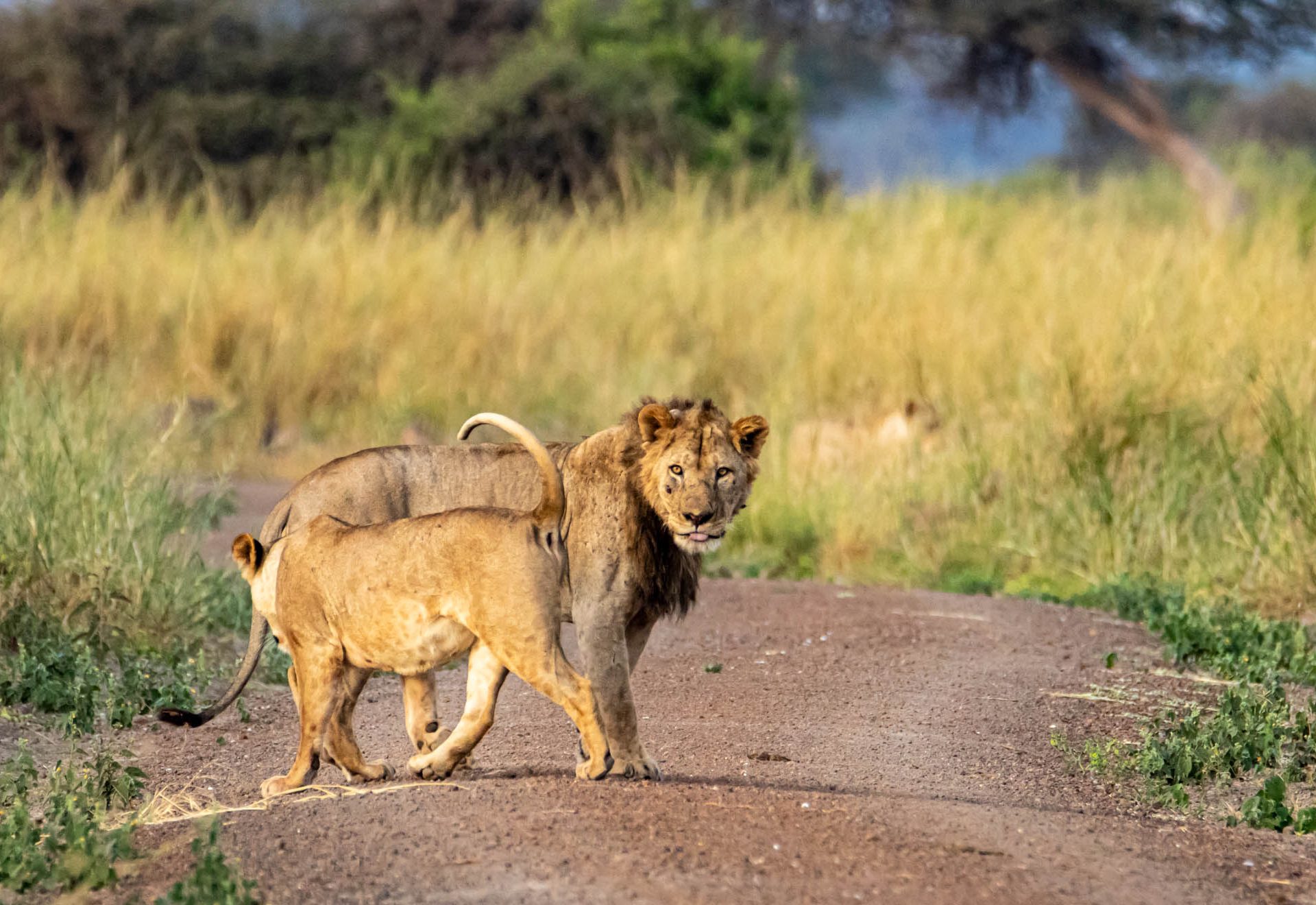
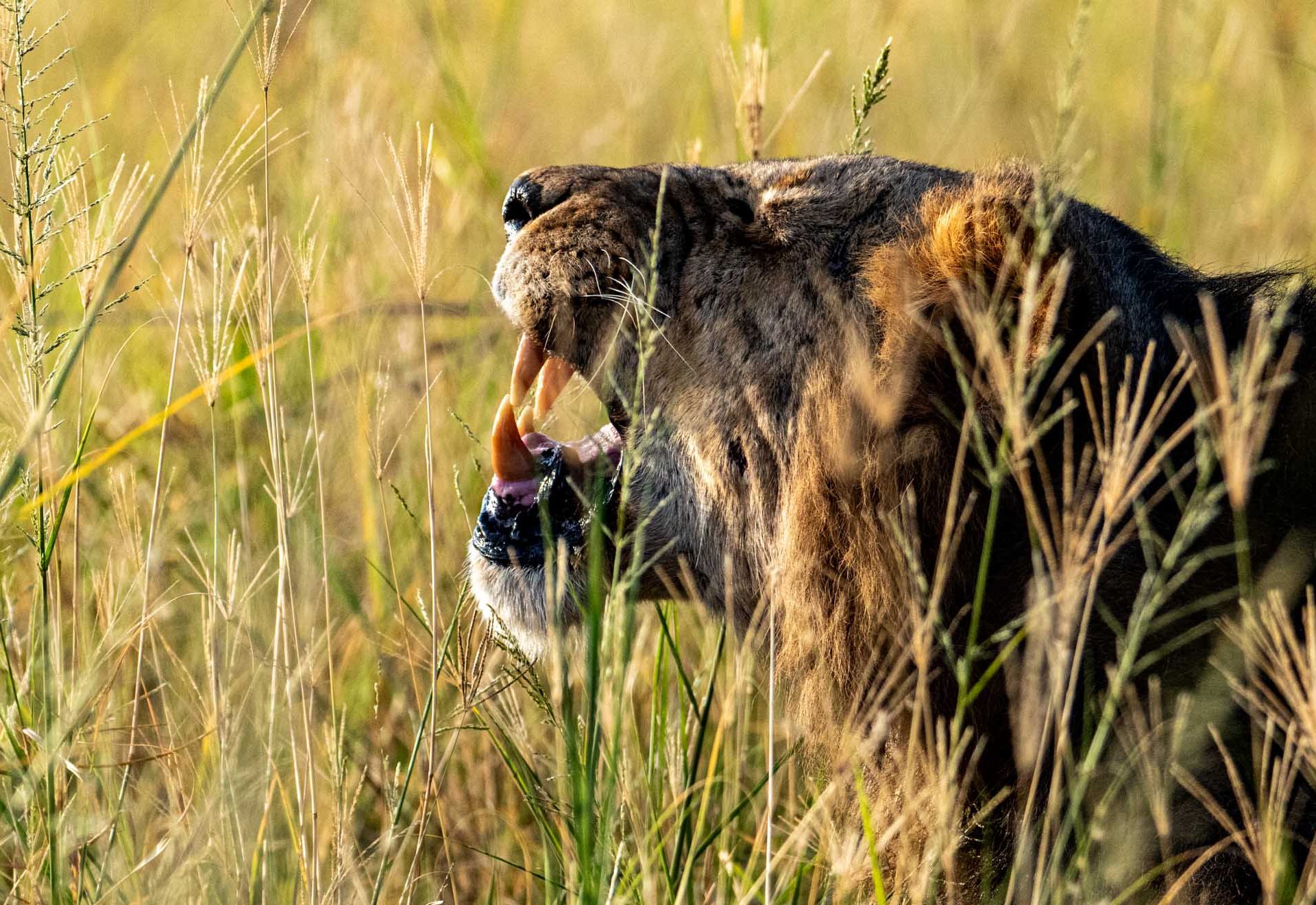
The sunsets in Kimana produce a heavenly flow of light that illuminates the landscape. Not far from the lodge, on the way back from a drive in the Sanctuary, we noticed a standoff — two gnus (wildebeest) standing opposite each other. As we watched, they kicked up dust and began to kneel and lock heads. This went on for several minutes as they fought.
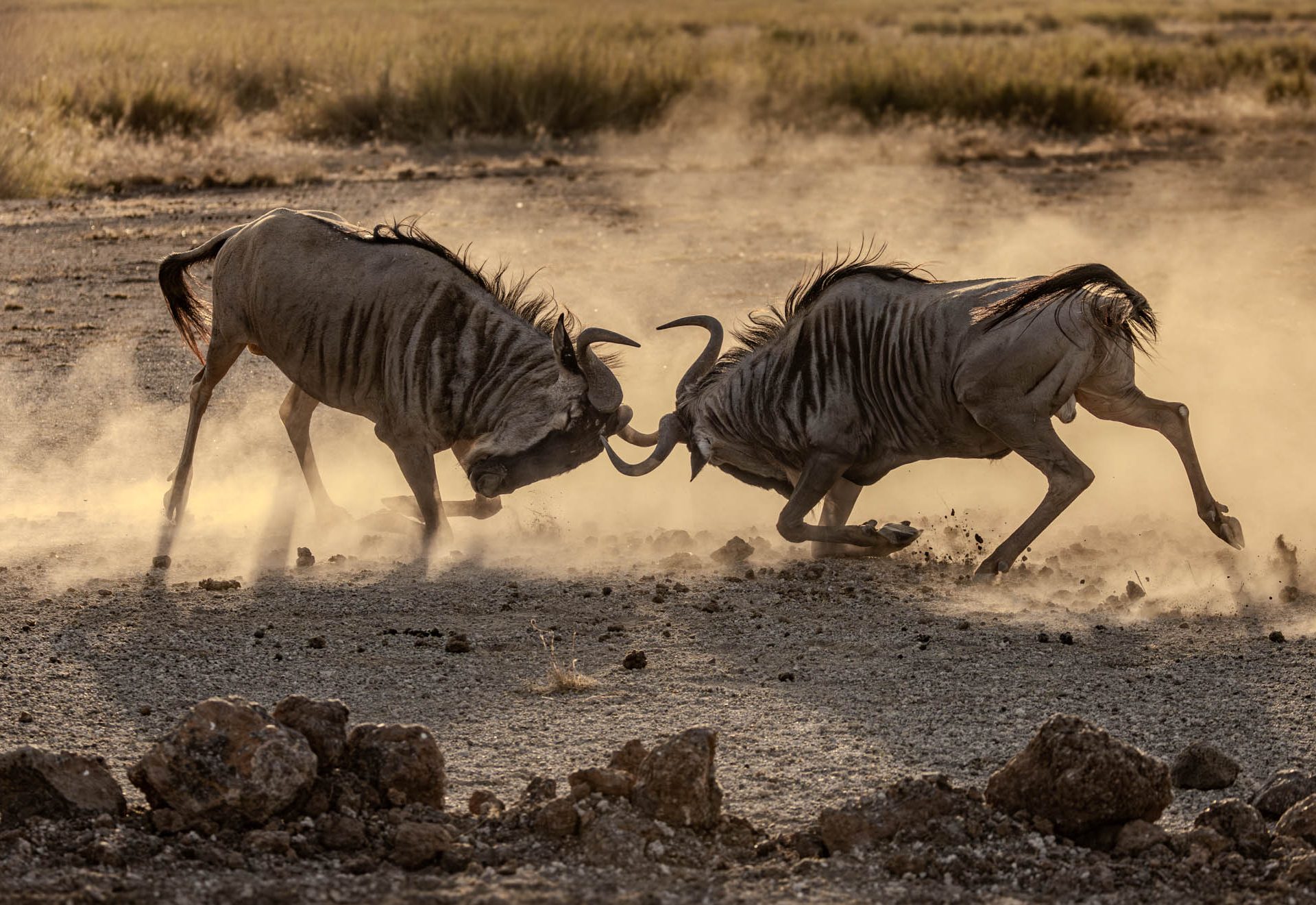
While we watched the chaos, a beautiful male lesser kudu was spotted among a group of nearby impala. Typically, these creatures are shy and solitary, but it seemed comfortable among the herd, grazing together as the sun began to set. Only male kudus have horns which spiral and twist upwards. Like impala, these horns will continue to grow throughout their lives. The delicate white vertical stripes you can see on his back can provide camouflage, and his muted tan colour allows him to blend naturally into his environment.

Steven Sabore, a Guide who has recently joined our team, is a fountain of knowledge about this area and its wildlife. As we drove through the temporary lake on an elevated dirt road, the clouds reflected off the water giving the illusion of flight. Thousands of flamingoes are found along these waters among hundreds of other different bird species. Even though I had seen large groups of flamingoes before (also known as a 'flamboyance'), I was struck by how loud they were collectively.
It is the salt and shallow water that brings these animals to Amboseli, feeding on spirulina algae, which is not always there — so they are only at the lake when conditions are favourable. Chicks are typically covered in greyish-white feathers, lacking the famous pink colour. When young, the bill is straight and black and over time, bends and changes colour.


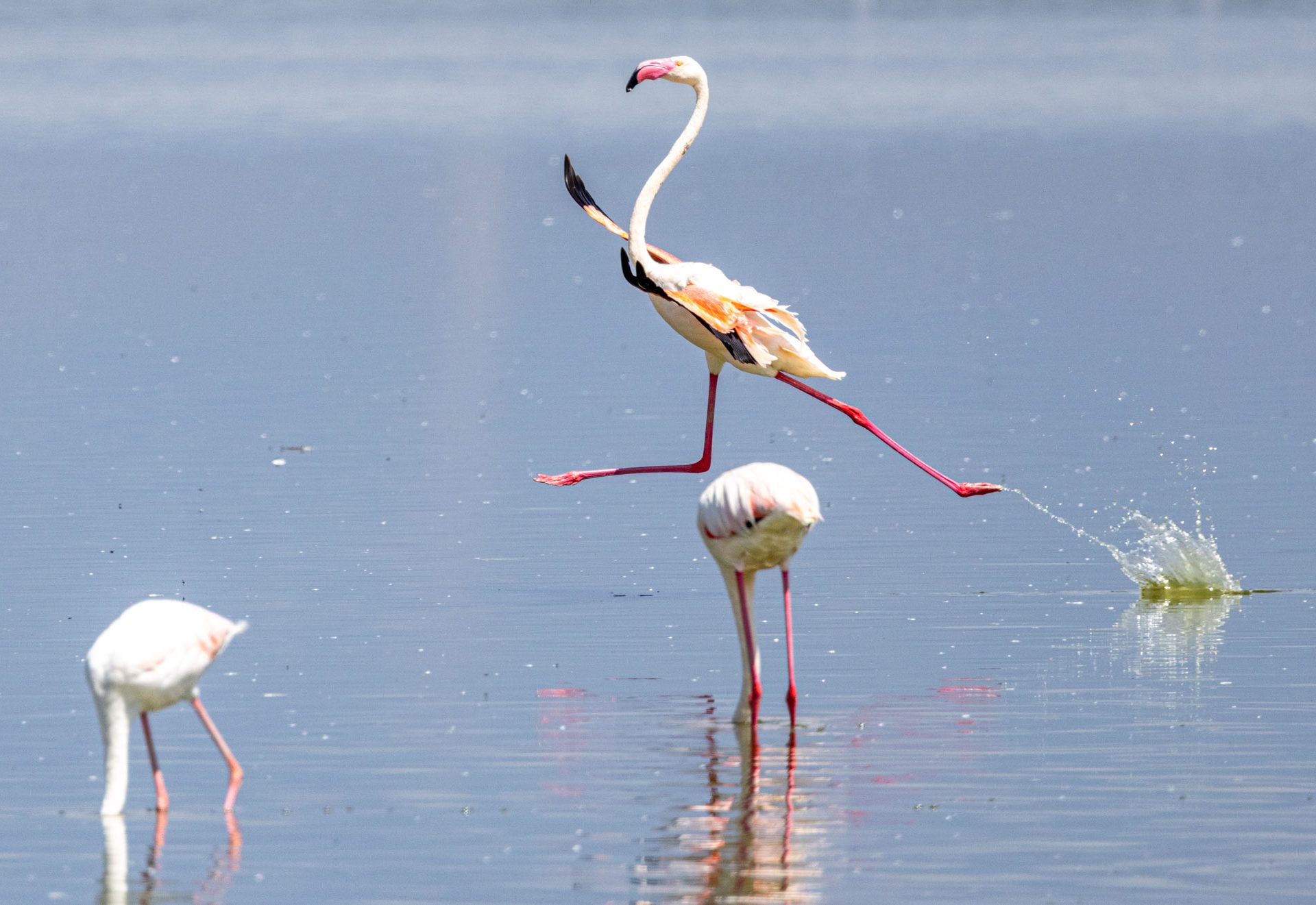

I had never seen some of the wonderful birds that Sabore showed me on our trip. One of those which immediately caught my curiosity was a small water thick-knee. With large yellow eyes that allow for enhanced night vision and increased peripheral vision, this bird is considered crepuscular and nocturnal, which means it is most active during both dusk and dawn hours as well as the night. Some studies also suggest that a yellowish lens on the eye can filter out blue light allowing for better night vision by enhancing colours and detail. Another incredible bird we found was a black crake, a small black water bird with a unique combination of red eyes and a yellow beak. Similar in habitat and prey to the thick-knee, both feeding on insects, they are fairly shy birds and like to stay hidden in dense vegetation.
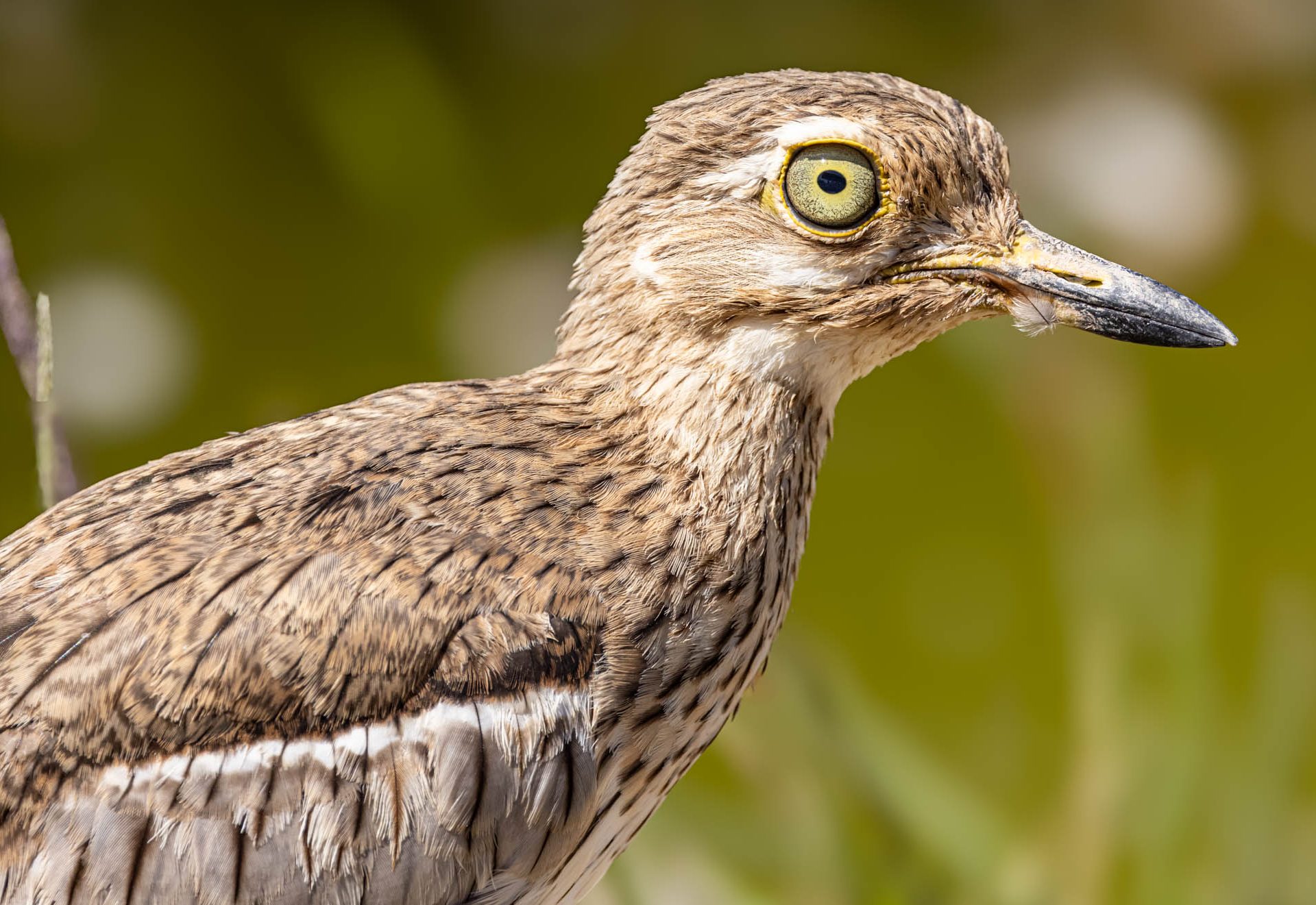

One phenomenon regularly witnessed in Amboseli is dust devils, a strong, well-formed, but short-lived whirlwind that occurs when the surface of the ground is hot, and there are clear skies with light winds. A pocket of hot air rises quickly while cooler air from the surrounding area rushes to replace it, creating a circular motion. This creates a vortex that can pick up dust from the ground. It is almost as if the earth is reaching up to the skies for a few fleeting moments.

In these parts, the mountain stands tall and proud — a silent guardian watching over the elephants' slow, majestic dance across the plains. The sheer number of elephants that roam Amboseli is truly a sight to behold as massive groups move from place to place as they graze and search for water. Other animals acknowledge their presence by moving out of their way as they silently march through time from generation to generation. –Andrew Andrawes
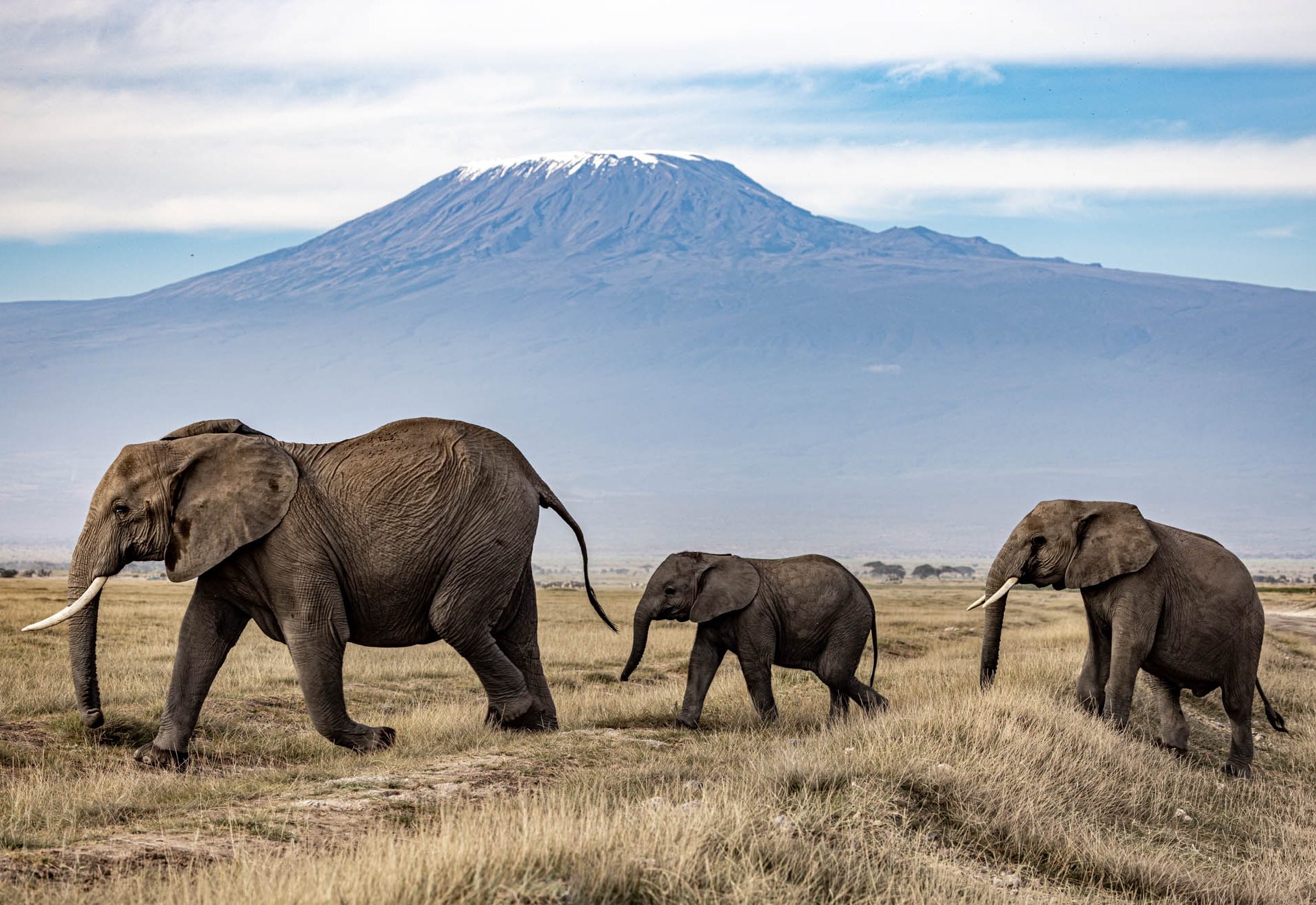

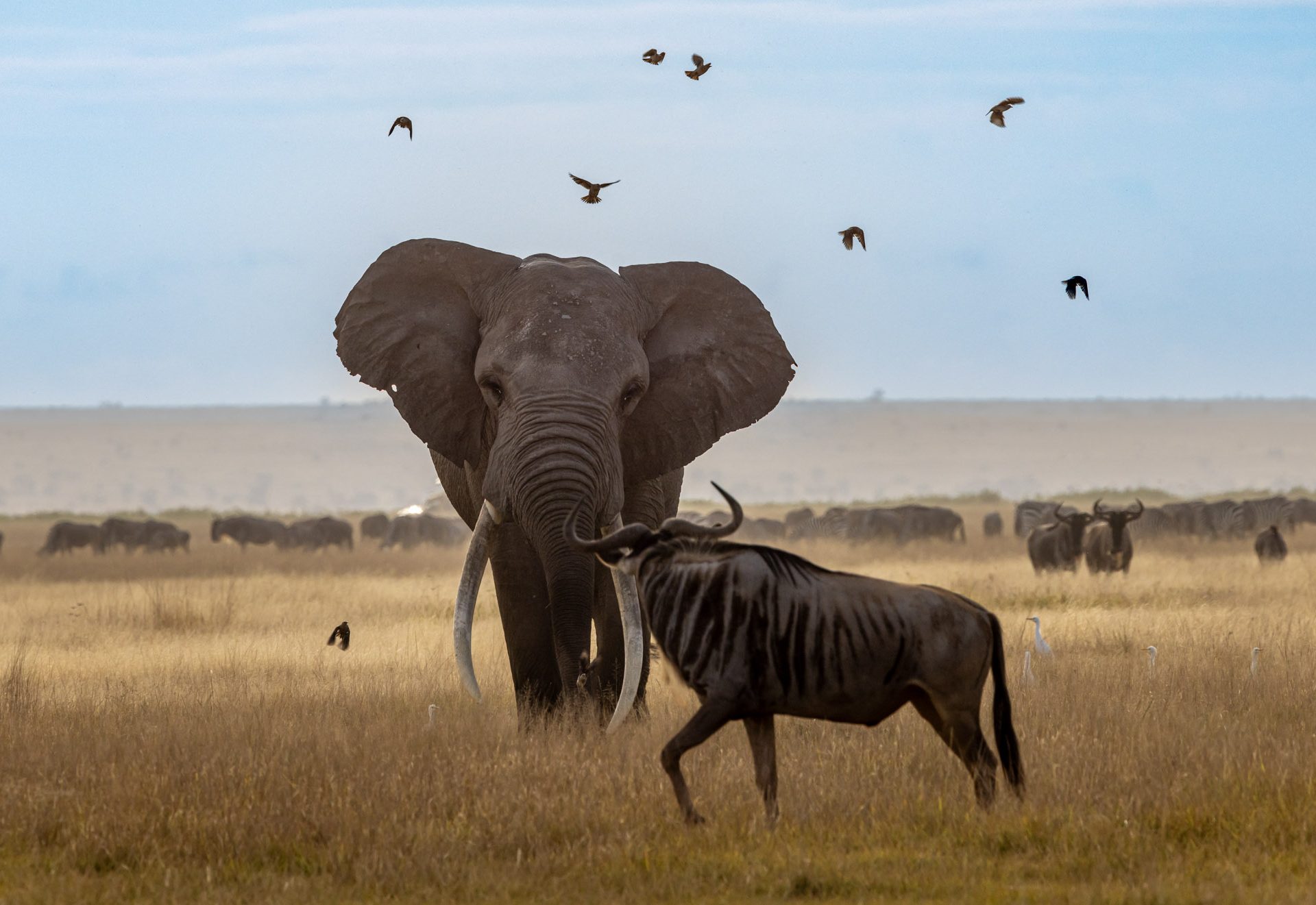
Filed under: This Week at Angama
Subscribe for Weekly Stories
Comments (0):

Weddings in the Mara